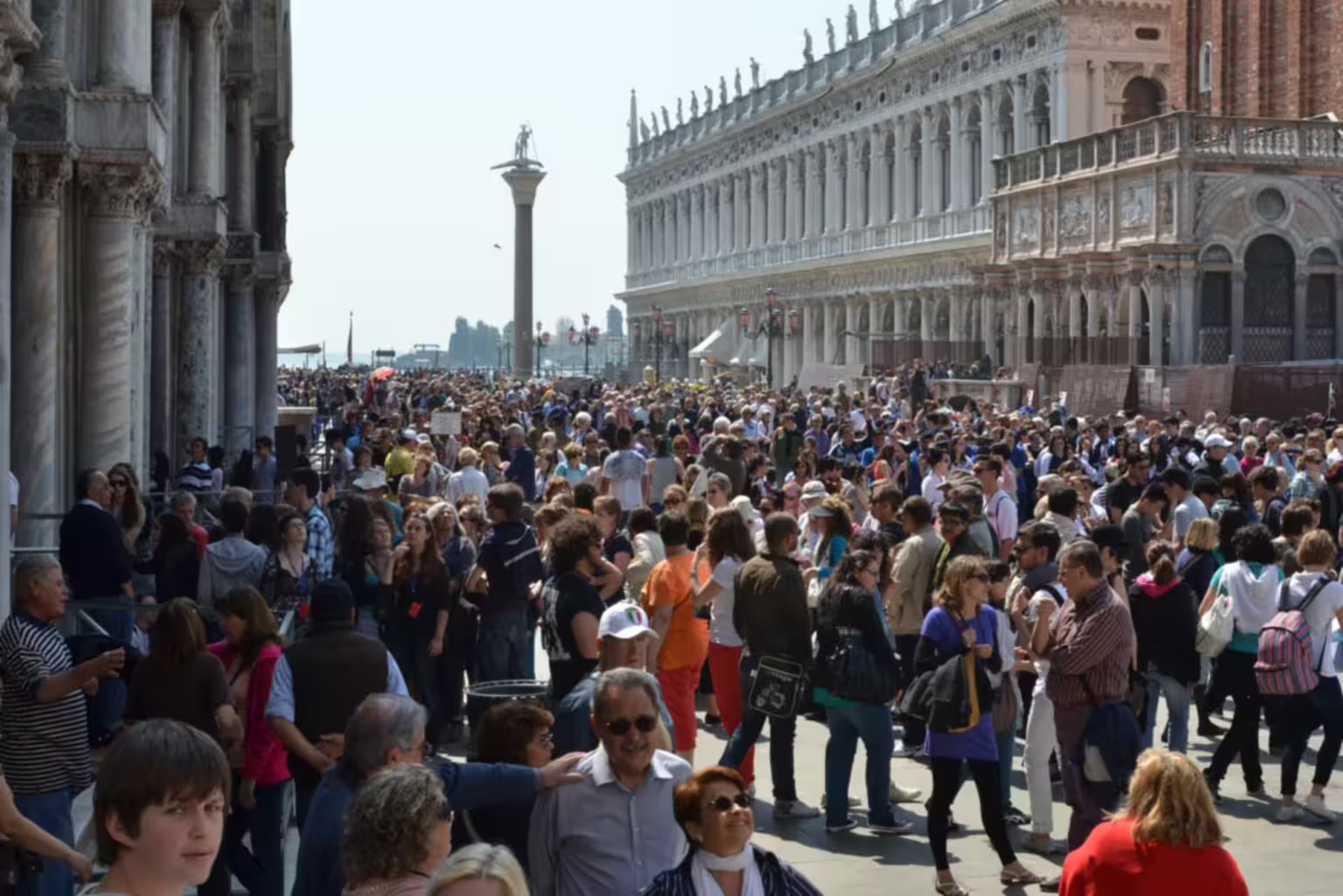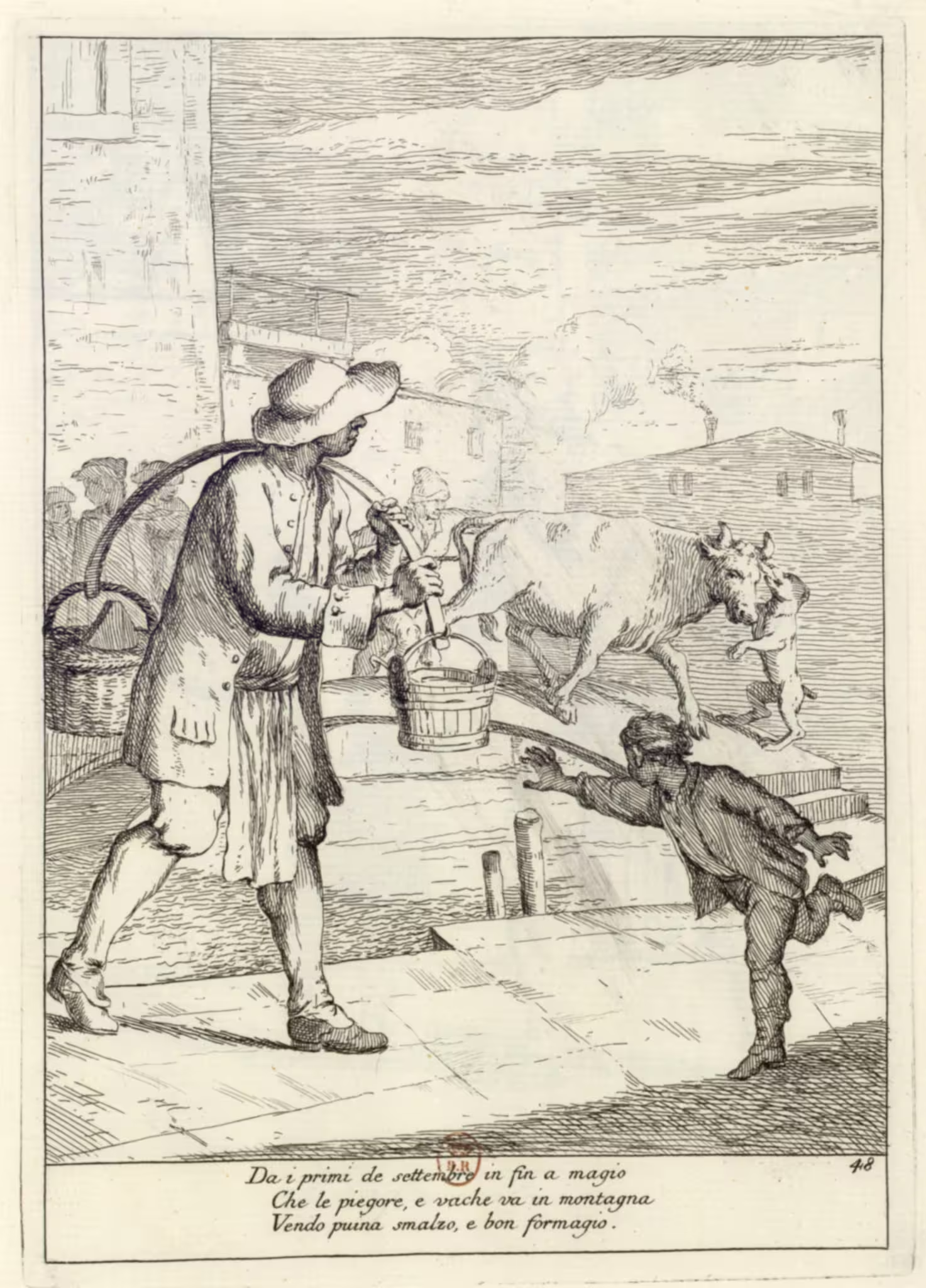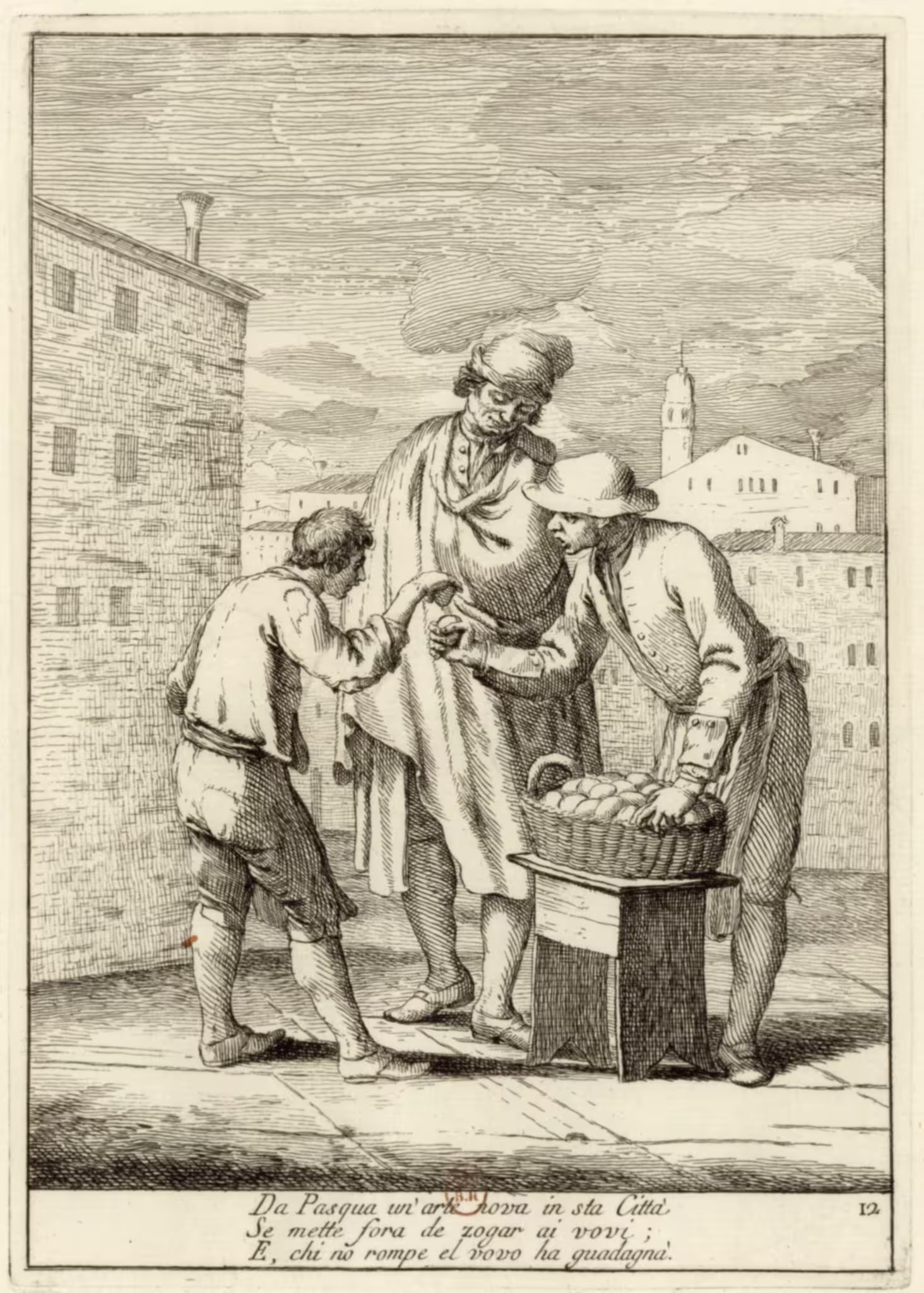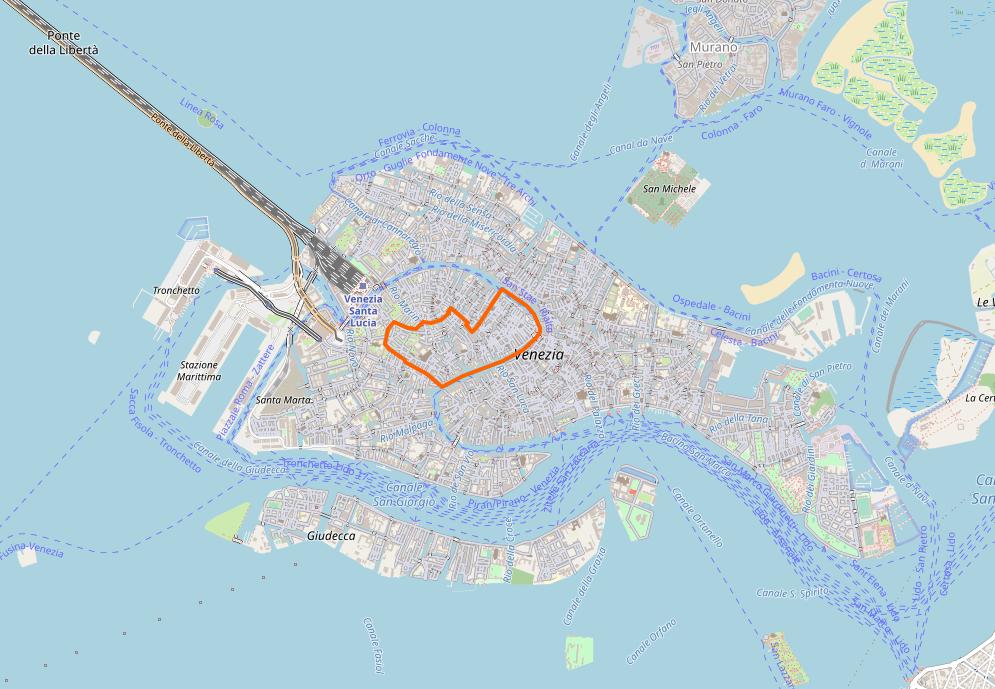Yesterday’s post about some old postcards from the 1950s touched on the subject of mass tourism and population decline in Venice.
The photographs show a lot fewer people in the 1950s than there are today. They’re also much more likely to be residents of the city, rather than tourists.
Update: as of early April 2024 the population of Venice is now under 49.000, a thousand persons less than one year ago.
Population decline
In 1951, the city of Venice had almost 175,000 inhabitants. That is a number well in line with the historical population levels for many centuries back.
In 2022, the population of Venice was lower than 50,000 for the first time since the Middle Ages.
That is a drop of seventy per cent in seventy years.
Or maybe, rather than talk about a ‘drop’ of the population, we should talk about a collapse of the population.
The decline in population shows no signs of relenting. The city is consistently losing about one thousand inhabitants each year. The number is steadily ticking downwards.
The reasons for the decline are complex, so the discussion below is necessarily a simplification and a generalisation.
Jobs in industry
The economy of Venice changed in the years after WWII.
The commercial harbour moved to the mainland in Marghera, and industry followed. The area had been built up before the war, both for industry and housing for the workers, but the place only took off after the war.
Young people searching for a steady job headed to Marghera in large numbers. There they could find a job in industry, buy a house, start a family.
Their parents would often remain in the old home in Venice.
Their children, born in the 1960s and 1970s, grew up on the mainland. Often, they speak Venetian, consider themselves Venetians, but they have never actually lived in Venice except maybe the very first few years of their lives.
Venice is beautiful, but …
Venezia è bella, ma non ci vivrei.
“Venice is beautiful, but I couldn’t live there,” is a common phrase from these Venetians who have never lived in Venice, and frankly couldn’t image a life without a car.
Life in Venice is too slow, too cumbersome, too expensive, too impractical.
The city is fine for a night out, going to bacari and having fun, but it is not a place to live in.
A prolonged exodus from Venice lasting at least two generations has drained the city of many residents, who are never coming back.
In part, they’re not coming back because they’re right. Life in Venice is slow, cumbersome, expensive and impractical.
Mass tourism
Mass tourism started in the 1960s, and brought higher and higher numbers of visitors to Venice.
When I came to Venice about fifteen years ago, the consensus was that the city had around 20 million visitors a year, and that it was close to the limit of what the city could sustain.
Just before the Covid-19 pandemic, the same unofficial consensus was 40 million visitors. Double the number of tourists in little more than ten years.
Now, after Covid lockdowns and restrictions are over, from the sense of the city, I believe we’re back in the 20 million ballpark.
I don’t have any official numbers to report because the city administration stopped publishing official numbers about fifteen years ago.

Generational turnover
The parents and grandparents of the people who moved to the mainland in the 1950s and 1960s, mostly remained in Venice. It was their home, and in numerous instances had been the family’s home for generations.
In fact, the average age of the residents of the city has been growing steadily. Many younger people have left, while the ones remaining grow older.
As they grew older, and either died or moved to retirement homes, their vacant flats passed on to their children. Children who are now maybe grandparents themselves, and firmly based on the mainland for almost their entire life.
They’re not moving to Venice, away from their children and grandchildren, just because there’s an empty flat there for them.
B&Bs, AirBnb, short-term rentals
What do you do with one or more flats in Venice, that you have no intention of living in?
You could rent it out to somebody who’d like to live in Venice, and thus help counter the decline of the city. Depending on the flat, that could give a gross income of €500-€1000/month in rent.
Or you could rent to tourists, which, with the growth in mass tourism, are flooding the city. Renting the flat to tourists can give a gross income of €500-€1000/week.
Even if the flat is empty half the time, you still earn double. Even if you rent it through an agency or on AirBnB, which can easily cost a 30% fee, you still make more money.
It’s not really a difficult choice.
A huge number of such flats leave the residential market and enter the tourist rental market. Just like with visitor numbers, we have no official data, but estimates are that up to half the flats in Venice are de facto tourist rentals.
The resident crisis
With the wage level in Italy, there is no way a person or a family with an average income can pay a rent that can compete with what the tourists are paying.
Residents see their leases terminated, and the flats turned into tourist rentals.
Finding something new that they can afford is practically impossible.
Hence, the continued loss of residents.
Those who’d like to live in Venice, even if it is slow, cumbersome, expensive and impractical, too often find it prohibitively expensive and are forced to settle elsewhere.
A political solution
Any solution to this problem will have to come from the world of politics, but it won’t.
When the harbour of Venice was moved to the mainland in the 1920s, the municipality of Venice was united with all the surrounding municipalities, both in the lagoon and on the mainland.
The harbour of Venice with all its jobs had to be in Venice.
The municipality of Venice now encompasses most of the lagoon area, and two major towns on the mainland, Mestre and Marghera.
Search online for the population of Venice, and the result is usually well over a quarter of a million. Venice city is now at 50,000 inhabitants, and there are another 30,000 living on different islands in the rest of the lagoon, mostly on the Lido di Venezia, Murano and Burano.
The remaining 200,000 inhabitants of “Venice” live on the mainland.
Two-thirds of the votes in municipal elections are on the mainland. That is where elections are won.
Therefore, the interests of voters on the mainland have precedence. In fact, of the current local administration (the giunta), only one member lives in Venice. The rest lives on the mainland.
In short, the owners of the many tourist rental flats in Venice, who mostly live on the mainland, use their votes to keep things the way it is.
Catch 22.





Leave a Reply